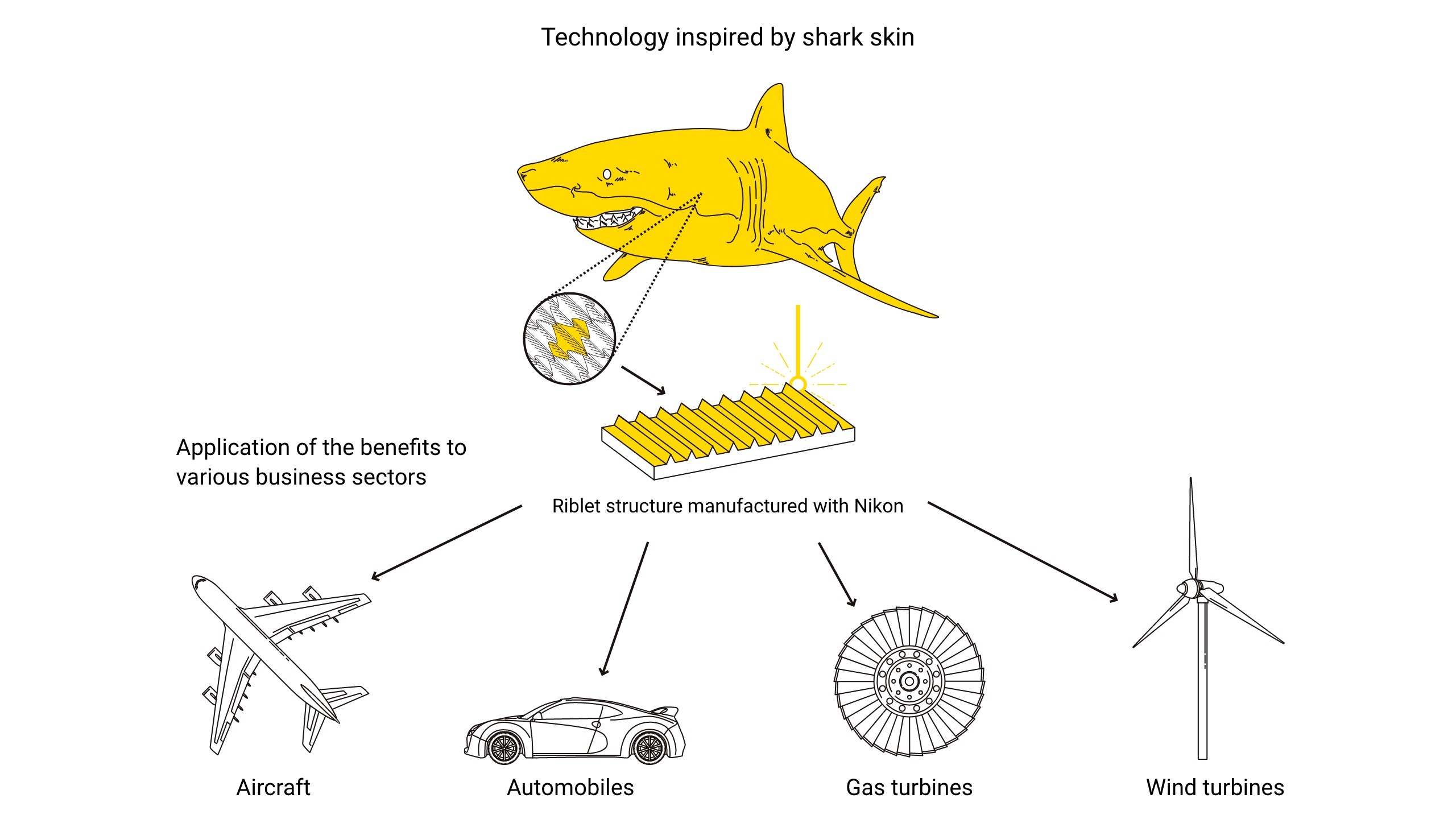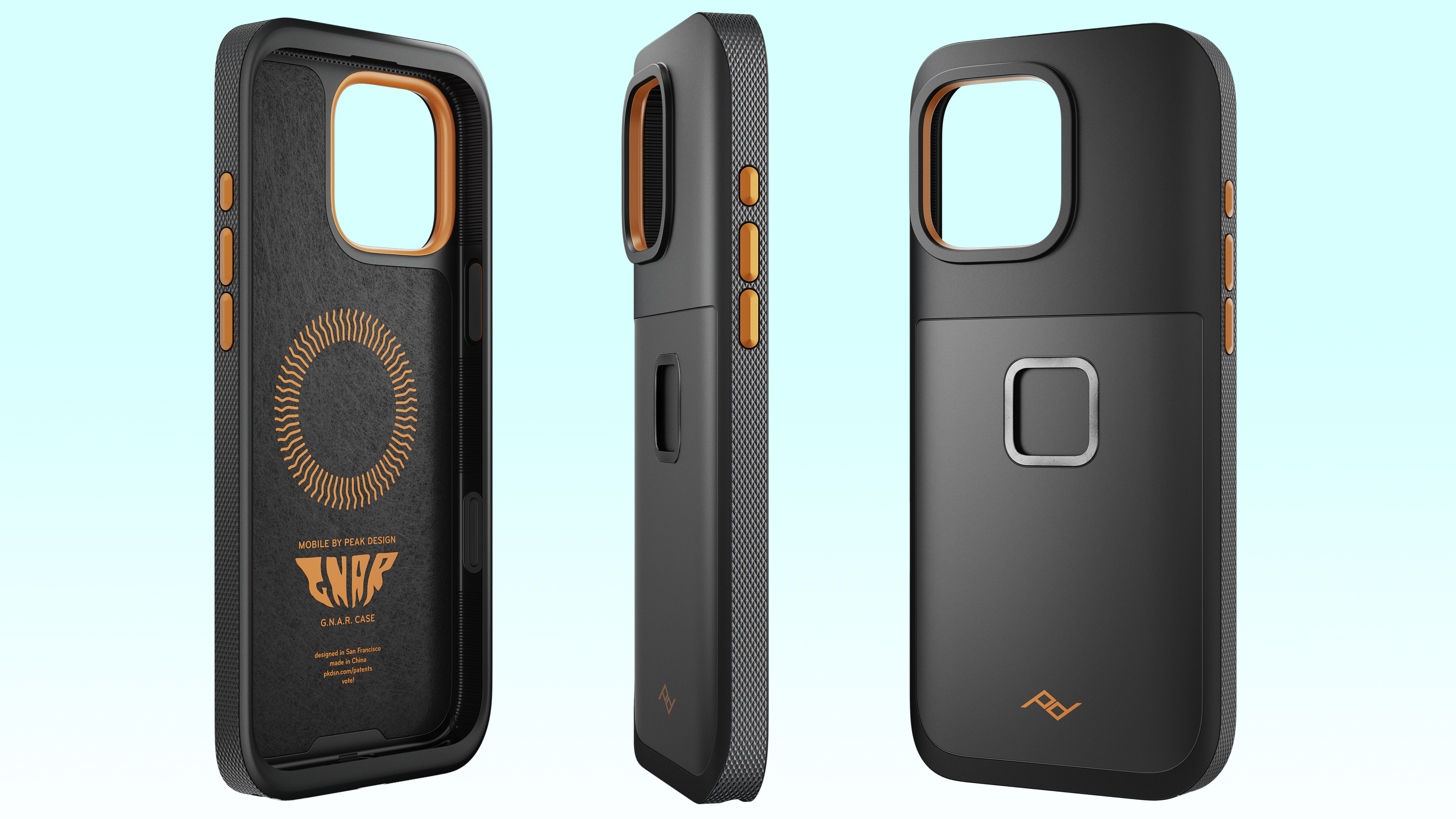Nikon shows off its new technology inspired by shark skin
The technology will mainly be used in aviation, and could help reduce fuel costs by tens of millions of dollars

The tech world has always taken inspiration from the natural world, and Nikon recently showcased its innovative riblet-processing technology.
Designed for aviation, water and wind power, this biometric technology mimics the incredible surface structure of shark skin, using Nikon’s proprietary laser processing to create riblets.
Riblets are surfaces with grooves placed on aircraft, particularly on the wings and fuselage where air currents are strong, to reduce drag and improve fuel efficiency, and reduce CO2. emissions.
Nikon predicts that its shark skin technology will improve fuel consumption on aircrafts by 2%, reduce annual fuel costs by ¥8 billion (around $51 million / £41 million / AU$82 million). It also believes that it could cut CO2 emissions by 300 tons.
Nikon has been working on this technology for some years as part of its sustainability efforts, helping aircraft towards a carbon-neutral future. It first started applying its riblet technology in 2019, and displayed it at CES last year. Showcasing it this year's show, Nikon wanted to demonstrate its significant developments in the wind turbine industry.
Nikon’s advancements in riblet technology are already making waves in several industries. “One of our significant advancements this year is the application of Riblet technology to actual wind turbines,” said Mutsuki Nakayama, a Nikon representative said to Interesting Engineering.
“We’ve implemented Riblet technology on aircraft operated by ANA Airlines and Japan Airlines in Japan. Currently, we’re also working on applying it to helicopter blades to further reduce drag and improve efficiency.”
Get the Digital Camera World Newsletter
The best camera deals, reviews, product advice, and unmissable photography news, direct to your inbox!

So, why sharks?
Sharks have existed for over 400 million years, and they have evolved a unique texture on their skin of longitudinal grooves that helps them glide through the water with very little resistance. By replicating the engineering of shark skin, Nikon has developed a way to apply riblets to various materials, such as jet engines, to improve their energy efficiency.
“Riblet is a new technology developed by Nikon, inspired by the texture of shark skin,” Nakayama added. “It originated from our lithography business and leverages our expertise in laser machining – one of Nikon’s biggest assets. By using laser etching, we create tiny structures on the surfaces of various materials such as films, metals, resins, and coatings. These microstructures mimic shark skin and help reduce friction by about 7%.”
Nikon’s laser-based manufacturing of riblets offers multiple key advantages over traditional methods that rely on resin films, which have limitations like heat resistance and durability.
Its riblets can be applied to three-dimensional curved surfaces as the laser technology ensures precise application, whereas traditional methods may cause wrinkles or peeling.
Despite this huge advancement, Nikon did face difficulties – particularly in ramping up production to match significant demand.
“One of the main challenges was the throughput of the laser processing. Initially, the laser processing time was quite slow, which limited our ability to scale up production. The COVID-19 pandemic also impacted our progress, but we’re continuously working to improve the process,” said Nakayama.
You might also like…
Take a look at our guides to the best Nikon cameras and the best Nikon lenses. You might even be interested in the best waterproof and underwater cameras!

After graduating from Cardiff University with an Master's Degree in Journalism, Media and Communications Leonie developed a love of photography after taking a year out to travel around the world.
While visiting countries such as Mongolia, Kazakhstan, Bangladesh and Ukraine with her trusty Nikon, Leonie learned how to capture the beauty of these inspiring places, and her photography has accompanied her various freelance travel features.
As well as travel photography Leonie also has a passion for wildlife photography both in the UK and abroad.
